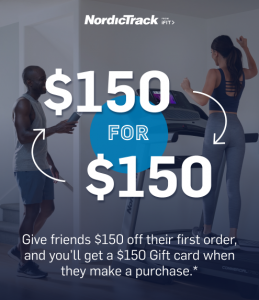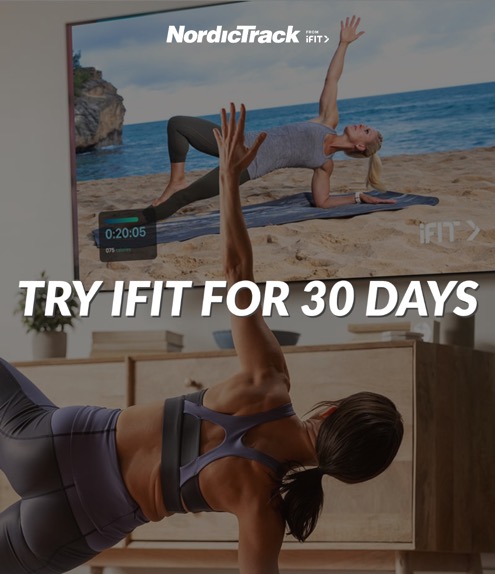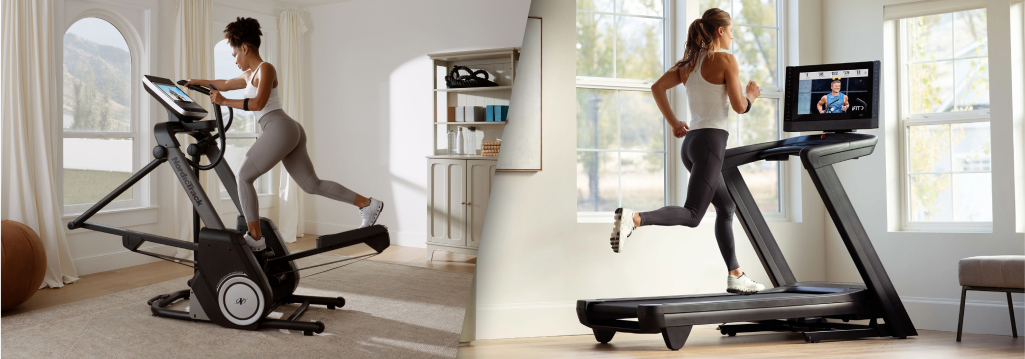
Since you’ve landed on this article, you’re likely trying to figure out what’s better for you, the elliptical or a treadmill.
Maybe you’re even wondering, is the elliptical better than a treadmill for weight loss? Or, which one burns more calories?
No matter which group you fall under, this article has you covered.
We’re diving into everything you need to know about the elliptical vs. treadmill, and solving the debate of which one to go with today.
We’ll also look at the research to see what science supports and whether one is better than the other.
Comparing the Benefits of Ellipticals vs. Treadmills
For today’s purposes, we’ll assume you have a general understanding of what an elliptical machine is versus a treadmill, so we can dive deeper into the benefits in this article.
If you want to learn more about each piece of equipment, follow the previous paragraph’s links before reading on.
The Benefits of Using an Elliptical
Here are just a few of the perks that come with working out on an elliptical:
1. They’re Low-Impact
One of the best benefits of an elliptical is just how low-impact they are.
Instead of constantly striking your foot against a hard surface like the pavement, whether that’s through running outside, you exert a gentler pressure on the pedals to create a fluid, circular movement pattern.
This creates enough resistance that your body feels the motion and engages multiple muscle groups (our next point) without overexerting yourself.
2. They Provide a Great Full-Body Workout
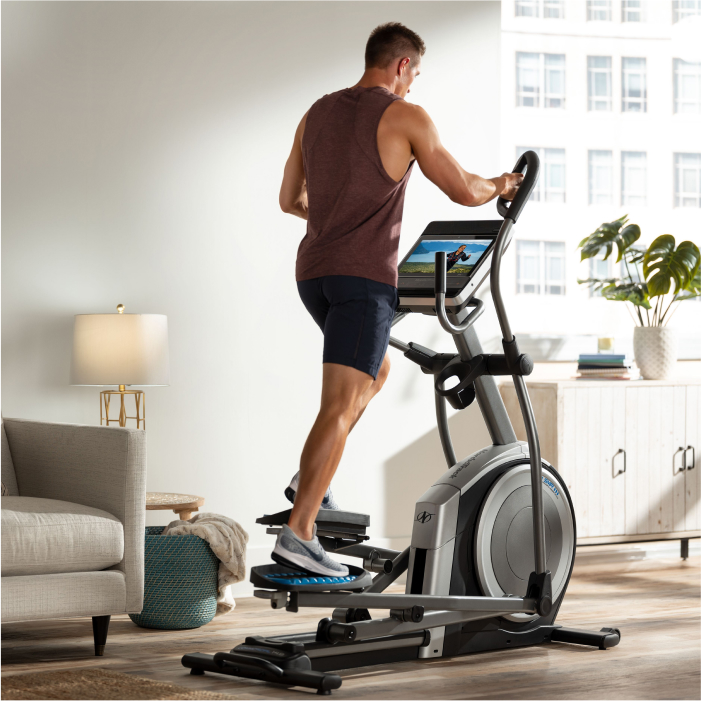
While the arm swings on an elliptical machine mimic what you’d do on a treadmill, they take it a step further by offering another level of resistance.
Now you’re not just swinging your arms in the air; you’re pushing and pulling the arm handles like levers and working out your upper body.
This can work your chest, shoulders, arms, biceps, and triceps on top of your important leg muscles like the glutes, hamstrings, calves, and quadriceps.
And since you’re swinging the opposite arm forward as the opposite leg moves back, it also requires you to use balance and engages your core.
Engaging multiple muscle groups like this creates an efficient and effective total-body workout that can help you burn calories (more on this shortly) and reach your fitness goals.
3. They’re Great for Easing Back Into Workouts
Experts agree that since ellipticals are so low-impact, they’re great for easing back into workouts, especially after an injury, and for those with osteoporosis.
4. They Can Help Support Your Weight Loss Goals
With high-quality elliptical machines, you can increase the resistance and incline to create more of a challenge or reverse your pedaling for an advanced workout.
Go as fast or slow as you want, and you’ll still find that ellipticals help you achieve a nice calorie burn since they’re such a great total-body workout.
Before you run off to hop on an elliptical, you should know that treadmills also have their fair share of perks to consider.
The Benefits of Using an Incline Treadmill
Here’s why you may want to consider working out on an incline treadmill:
1. They Can Help You Challenge the Right Muscles
Treadmills, in general, and especially incline treadmills, target one of your largest muscle groups: your legs.
They engage your gluteus maximus, the largest muscle in the body, along with your hamstrings, quadriceps, and calves.
2. You Can Add More Variety to Your Workouts
While you may have initially thought that all you can do is walk or run on a treadmill, you may be surprised to learn that they offer a wide range of options for working out.
You can walk, jog, run, or choose to do high-intensity interval training (HIIT) or hill sprints.
Plus, mixing up your workouts – including walking, running, and interval training – throughout the week can help you stay in shape and reach your health goals since each one has its benefits.
Interval runs can challenge and improve your aerobic capacity in less time, while walking at a low intensity is great for unlocking your fat-burning potential.
On top of that, you can choose how hard or slow you want to go so you can tailor your workouts to your unique fitness level and health goals.
And all of this can be done on one machine if you’re on an incline treadmill, which is great if you can only choose one piece of workout equipment to work with.
3. They Can Help You Get Race Ready
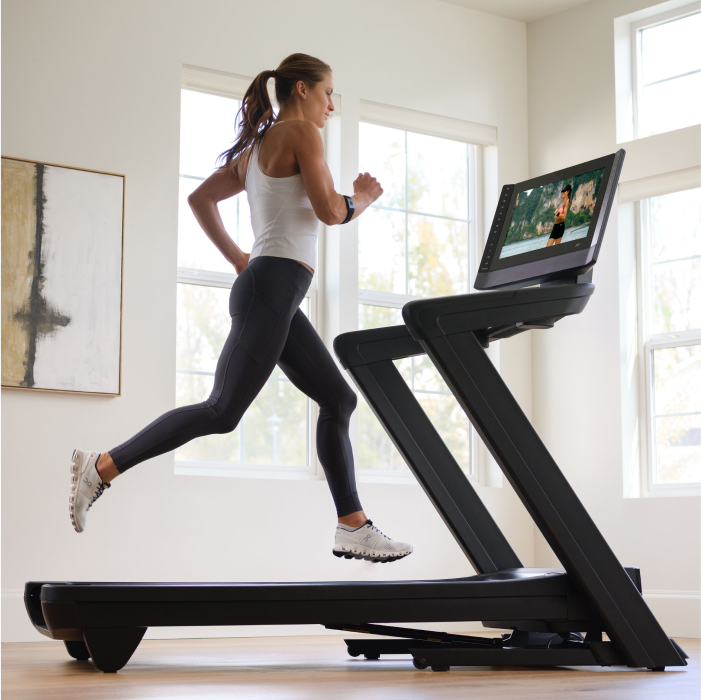
Treadmills are the perfect tool to train for upcoming races.
Not only can they mimic the movements you’ll be doing the day of the race, but they’re also great to use when the weather outside is less than ideal.
Instead of skipping a training day due to rain or extreme temperatures, you can hop on the treadmill at any time to get your miles in.
Plus, you can work out your race speed, pace, and other vital components to ensure you’re race-ready when the time comes.
Whether you’re training for your first 5k or fourth marathon, the treadmill is a great tool to get you there.
Elliptical Machine vs. Treadmill: What Does the Research Show?
Now that you know more about the benefits of both elliptical machines and treadmills, let’s see what the science has to say.
In the first study, 23 healthy male participants used either a treadmill or an elliptical each day.
Electrodes were placed on specific body parts to track which muscles were engaged and to see which ones were higher on the elliptical vs. the treadmill.
Researchers discovered that upper body muscle activation was higher when participants used an elliptical while their gluteus maximus and gastrocnemius (calf muscle) were more engaged on the treadmill.
The elliptical also activated the study participants’ quadriceps more.
The next study compared the treadmill versus an elliptical on nine healthy males and nine healthy females.
They found that VO2 max (which measures how much air you’re using during aerobic activities), rate of perceived exertion, or RPE (which measures how hard it feels while working out), and energy expenditure were no different between the two exercise machines.
The only striking difference was that study participants had a higher heart rate when using the elliptical machine.
As a result, researchers concluded that the elliptical is an acceptable alternative to the treadmill.
Another study compared the elliptical to a treadmill, walking outside on the ground, and using a stationary bike.
Researchers determined that the elliptical elicited greater activation in the quads and hamstring muscles than walking on a treadmill and outside. And that the treadmill showed more quad activation than walking outside.
Despite these interesting results, we can’t draw firm conclusions as to which exercise equipment is more effective than the other.
These studies show that both modalities effectively engage your muscles, but since these studies were so small, we can’t say conclusively to go with one over the other.
So how can you decide which one to go with?
We’ll help you choose in a moment, but before we do, there are a few more big questions you might be hoping to find some answers to:
Is the Elliptical Better Than a Treadmill for Weight Loss?
And which one burns more calories?
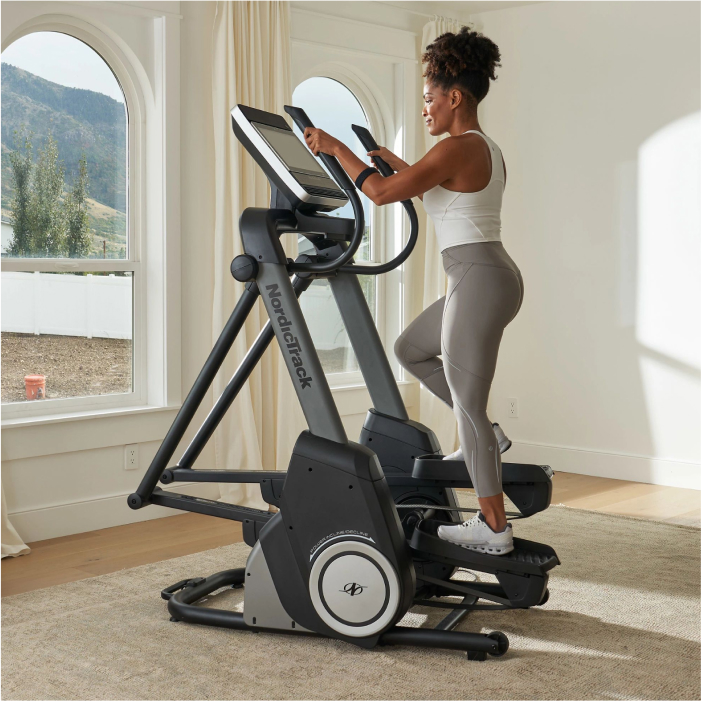
Harvard Health published a report that gives an estimated calorie burn for 30 minutes of exercise using a range of activities, and they broke this down for people weighing three different weights.
They found that a person weighing 125 pounds could reach an average calorie burn of around 270 for 30 minutes of exercise on an elliptical machine.
Someone weighing 155 pounds may reach 324 in that same time frame, while someone weighing 185 pounds could potentially hit a 378-calorie burn.
They also found that walking for 30 minutes at a 3.5 mph pace could elicit a 107, 133, and 159 calorie burn in people weighing 125, 155, and 185 pounds, respectively.
Bumping up the speed to 4.0 mph increased the calorie burn to 135, 175, and 189, respectively.
After reading that, you may be thinking that the clear winner for the elliptical vs. treadmill in calories burned debate is the elliptical, right?
Not so fast.
The real answer to those calorie-burning questions depends on a few factors, such as how much you weigh, how hard you’re working out, how old you are, whether you’re male or female, and how long your session is.
Using an incline treadmill or a 12-3-30 workout can help you increase the calorie burn of walking, so these figures should be taken with a grain of salt.
Increasing the speed and incline on your treadmill can help you burn more calories, while bumping up the resistance on your elliptical can also increase your energy expenditure.
So while it seems on paper that the elliptical elicited a higher calorie burn, that may not always be the case.
The actual calorie burn averages between machines will be unique to you and how hard you’re working, among other things.
That leaves us answering the big question:
Elliptical or Treadmill: Which One is Right for You?
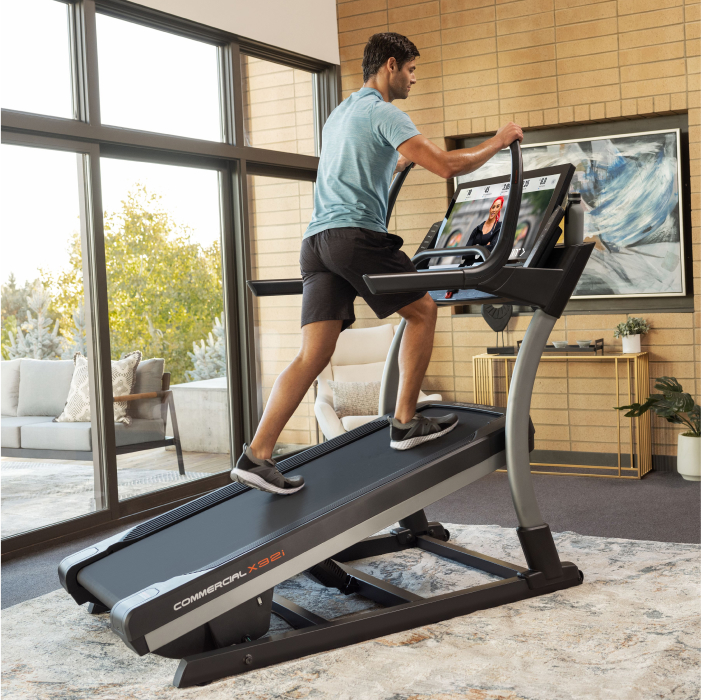
Now that you know both machines can elicit a strong muscle activation, and the calorie burn depends on how hard you work out, the decision of which one to go with may still seem up in the air.
Here are a few factors that can help you decide which one is right for you:
Consider an elliptical trainer if:
- You’re just starting out with exercise
- You’re coming back to training after an injury and need something low-impact
- You’re looking for a full-body workout
- You’re looking for more support and less pressure on your joints while working out
An elliptical is a great beginner-friendly machine that can help you ease into working out. Since you don’t have to master any proper running techniques, you can hop on an elliptical and get started right away.
However, a treadmill may be better suited for you if:
- You’re looking to train for a race
- You want more variety in your workouts and training sessions
- You want to strengthen and train your leg muscles specifically
- You enjoy walking or running regularly
The truth is, both pieces of equipment are great to go with, and either one can help you reach your fitness goals and progress them.
The bigger determining factor is to figure out which one you enjoy working out on, because that’s the one you’re more likely to stick with.
Both machines can help you achieve an effective calorie burn, which can aid in reaching weight loss goals, and you can choose to go as hard or as slow as you want by changing the incline and the resistance levels, so really the decision is up to you.
Do you feel like working out on a treadmill or an elliptical more?
That’s likely a better gauge of which one to go with.
An even better route to take is to consider using both machines interchangeably.
Not only will the variety keep you mentally engaged, but it will also help you challenge your muscles in different ways, which can also help you reach your health goals.
Another way to do just that is to follow the tips in this next section:
How to Get the Most Out of Your Treadmill or Elliptical Workouts
Ultimately, it’s not so much about the machine you’re using but how you use it.
Either one has the potential to give you a great workout.
Here are some tips to help you get the most out of your elliptical workouts:
- Keep a firm grip on the handles to engage your upper body
- Pump your arms and legs evenly so the resistance is distributed throughout your entire body
- Try not to lean in any one direction and work on engaging your core and staying centered
- Keep a slight bend in your arms
- Ensure your feet are flat and the weight is evenly distributed
- Use forward pedaling for a beginner-friendly workout and reverse your stride for more of an advanced challenge
- Change the incline and resistance levels of your elliptical to challenge yourself and your muscles further
- Add in some high-intensity intervals to really up the challenge and calorie burn of your workouts
For a great interval elliptical workout, check out iFIT’s Norwegian Ski Series.
To increase the intensity of your treadmill workouts, use these tips:
- Keep your head up, chest out, and your arms and shoulders relaxed to promote good posture and proper form
- Keep a 90-degree bend in your arms and swing them forward and back instead of across your body
- Ensure you land mid-foot with each stride so that impact is evenly distributed
- Adjust your speed and incline just enough to challenge yourself without putting too much strain and pressure on your body (if you have to grip the sides, you may be going too fast or hard)
- Add in intervals (you can adjust the speed, incline, or both) throughout your training sessions
- Use the incline feature to increase the resistance and challenge of your walking workouts
- Try the popular 12-3-30 treadmill workout to boost your calorie burn
If you’re looking for a great treadmill workout, check out iFIT Trainer Kelsey Sheahan’s Alaskan Trekking Series, which guides you through America’s final frontier and gives you an immersive experience with incredible views.
The Bottom Line
Since we don’t know your unique situation from behind the computer screen, there’s no way for us to tell you which machine to go with. But we hope the tips in this article helped you narrow down your selection a bit.
In the end, either option will be great at helping you reach your fitness goals, and as long as you progress and challenge yourself, you’ll start to feel better and notice a difference right away.
Going with the one you enjoy the most is always a great choice.
Using both machines interchangeably can also help keep things exciting and challenge different muscles.
So whether or not to go with an elliptical machine or a treadmill is up to you.
Whatever equipment you choose, know that the workout will leave you feeling great, and you’ll likely find you’re so glad you did it.
Disclaimer: This blog post is not intended to replace the advice of a medical professional. The above information should not be used to diagnose, treat, or prevent any disease or medical condition. Please consult your doctor before making any changes to your diet, sleep methods, daily activity, or fitness routine. iFIT assumes no responsibility for any personal injury or damage sustained by any recommendations, opinions, or advice given in this article. Always follow the safety precautions included in the owner’s manual of your fitness equipment.

